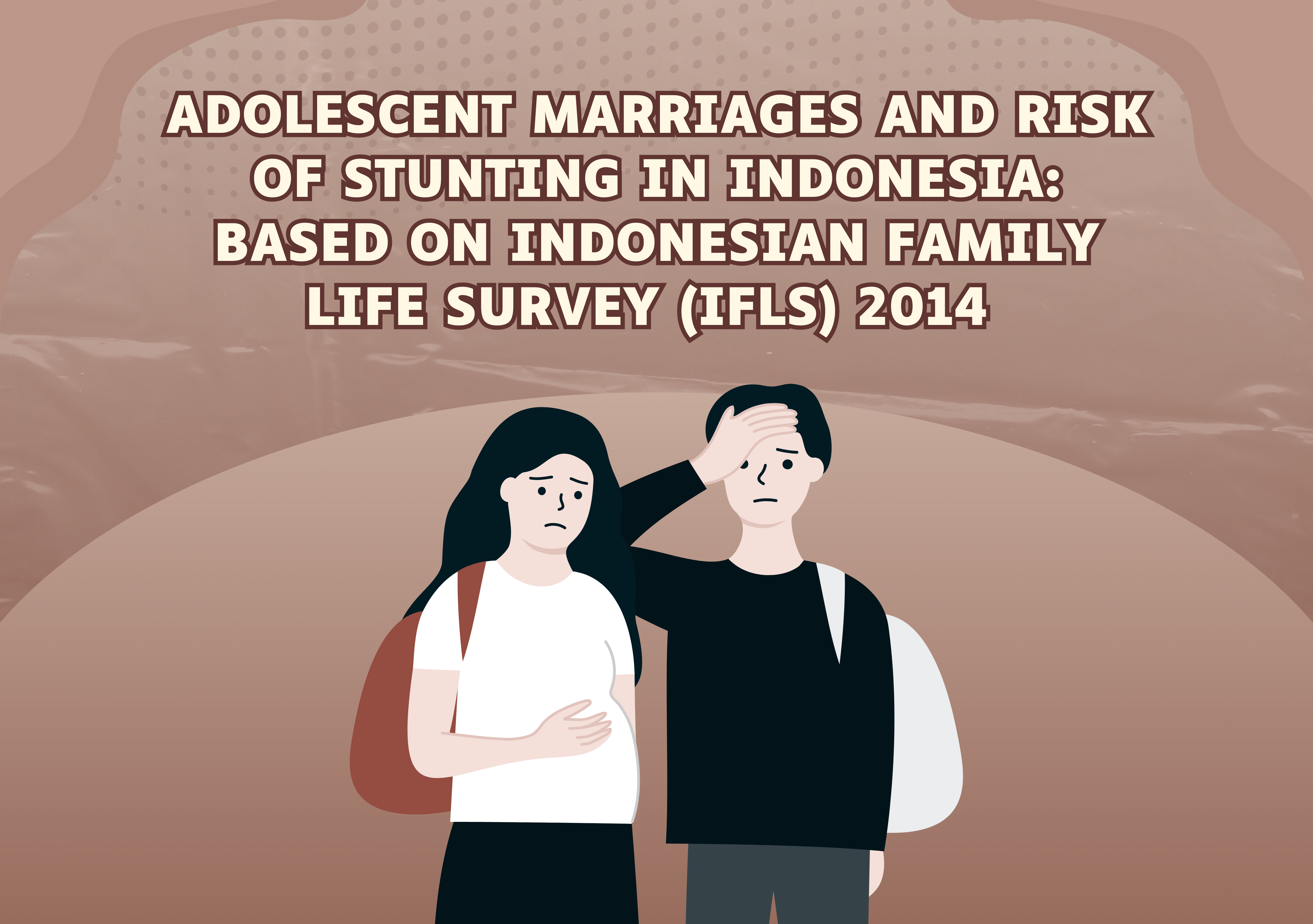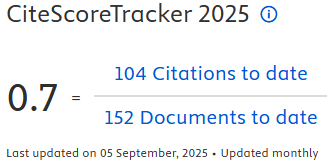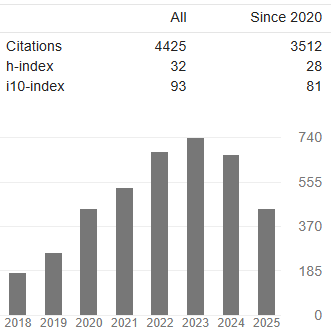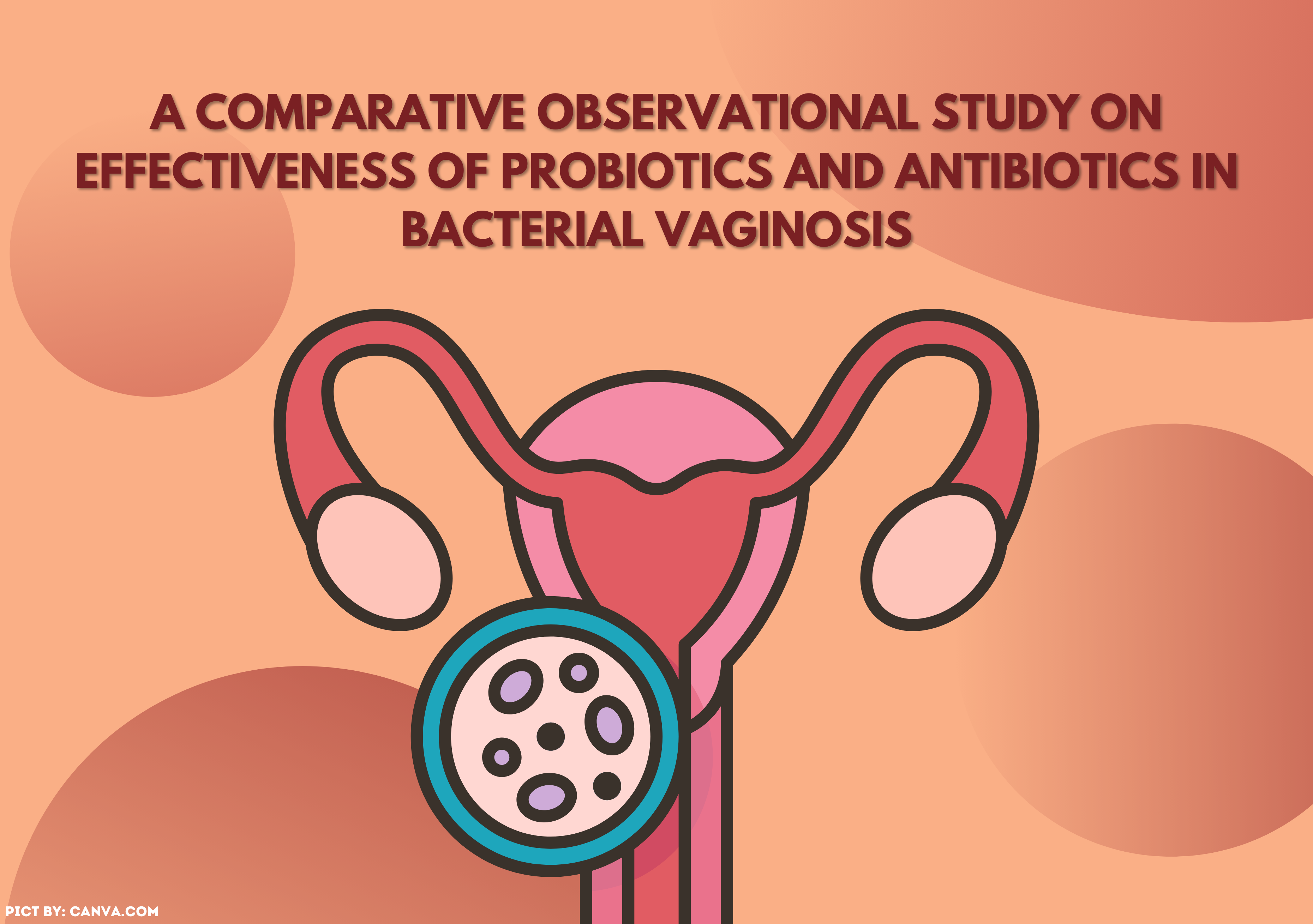ADOLESCENT MARRIAGES AND RISK OF STUNTING IN CHILDREN UNDER FIVE YEARS IN INDONESIA

Introduction. The 2018 Basic Health Research Report recorded that 58.8% of women aged 10-19 years had been pregnant and 25.2% were pregnant. Aims: The study aimed to determine the relationship between adolescent marriage and the risk of stunting in Indonesia. Method. This research used Indonesian Family Life Survey (IFLS) 2014 data with a cross-sectional approach. The study sample was 4,809 children who met the inclusion criteria, such as biological children, live births, children aged 1-5 years in the 2014 IFLS, children living with biological parents, complete data on the child's length or height, data on the characteristics of the child, mother, and family, the child does not have a disease. Independent variable is the age of the mother at marriage. The dependent variable is the incidence of stunting. Bivariate analysis used the Chi-Square test and multivariate analysis used logistic regression. Result. The risk of stunting in children under five years in Indonesia in 2014 was 36.6%. The risk of stunting is higher in children under five years of married mothers in adolescence (42.4%) compared to mothers who are married at an old age (35%). Adolescent marriage is associated with the risk of stunting in children under five years, married adolescents have a 1.2 times risk of stunting compared to mothers who are married at an older age (p-value 0.046). Conclusion. Adolescent marriage increases the risk of stunting. Cross-sectoral integrated interventions are needed to implement the marriage age maturity program to prevent adolescent marriages to reduce the risk of stunting
Anugraheni, H. S. and Kartasurya, M. I. (2012) ‘Faktor Risiko Kejadian Stunting Pada Anak Usia 12-36 Bulan Di Kecamatan Pati, Kabupaten Pati’, Journal of Nutrition College, 1(1), pp. 30–37. https://doi.org/10.14710/jnc.v1i1.725
Bamisaye, O. B. and Adepoju, O. T. (2018) ‘Association between stunting and obesity among under-five children in urban and rural areas of Oyo State, Nigeria’, Malaysian Journal of Nutrition, 24(1), pp. 25–34. https://doi.org/10.9734/JAMMR/2018/39637
Bloem, M. W., de Pee, S., Hop, leT., Khan, N. C., Laillou, A., Minarto, Moench-Pfanner, R., Soekarjo, D., Soekirman, Solon, J. A., Theary, C. and Wasantwisut, E. (2013). ‘Key strategies to further reduce stunting in Southeast Asia: lessons from the ASEAN countries workshop.’, Food and Nutrition Bulletin, 34(2), pp. 8–16. https://doi.org/10.1177/15648265130342S103
De Onis, M., Blössner, M. and Borghi, E. (2012). ‘Prevalence and trends of stunting among pre-school children, 1990-2020’, Public Health Nutrition, 15(1), pp. 142–148. https://doi.org/10.1017/S1368980011001315
Fadlyana, E. and Larasaty, S. (2016). ‘Pernikahan Usia Dini dan Permasalahannya’, Sari Pediatri, 11(2), pp. 136–140. https://doi.org/10.14238/sp11.2.2009.136-41
Febriyanti, N. P. V. and Dewi, M. H. N. (2017). ‘Pengaruh Faktor Sosial Ekonomi dan Demografi terhadap Keputusan Perempuan Menikah Muda Di Indonesia’, Piramida Jurnal Kependudukan dan Pengembangan Sumber Daya Manusia, 13(2), pp. 108–117.
Hoffman, D. J., Sawaya, A. L., Verreschi, I., Tucker, K. L. and Roberts, S. B. (2000). ‘Why are nutritionally stunted children at increased risk of obesity? Studies of metabolic rate and fat oxidation in shantytown children from Sao Paulo, Brazil, American Journal of Clinical Nutrition, 72(3), pp. 702–707. https://doi.org/10.1093/ajcn/72.3.702
Kusparlina, E. P. (2016). ‘Jurnal penelitian kesehatan Suara Forikes.’, Jurnal Penelitian Kesehatan ‘SUARA FORIKES’ (Journal of Health Research ‘Forikes Voice’), 7(1), pp. 21–26.
Larasati, D. A., Nindya, T. S. and Arief, Y. S. (2018). ‘Hubungan antara Kehamilan Remaja dan Riwayat Pemberian ASI Dengan Kejadian Stunting pada Balita di Wilayah Kerja Puskesmas Pujon Kabupaten Malang’, Amerta Nutrition, 2(4), pp. 392–401. https://doi.org/10.20473/amnt.v2i4.2018.392-401
Lestari, E. D., Hasanah, F. and Nugroho, N. A. (2018). ‘Correlation between non-exclusive breastfeeding and low birth weight to stunting in children’, Paediatrica Indonesia, 58(3), pp. 223–127. https://doi.org/10.14238/pi58.3.2018.123-7
Mashiur, R. (2017). ‘Determinates of early marriage in Bangladesh: An evidence of the nationally representative survey’, International Journal of Sociology and Anthropology, 9(1), pp. 1–7. https://doi.org/10.5897/IJSA2016.0684
National Institute of Health Research and Development, The Ministry of Health, The Republic of Indonesia. (2013). Basic Health Research Report 2013. Jakarta: Ministry of Health.
National Institute of Health Research and Development, The Ministry of Health, The Republic of Indonesia. (2018). 'National Report on Basic Health Research 2018', Jakarta: Ministry of Health.
National Population and Family Planning Agency (2017). Demographic and Health Survey of Indonesia 2017. Jakarta: BPS.
Picauly, I. and Toy, S. M. (2013). ‘Analisis Determinan Dan Pengaruh Stunting Terhadap Prestasi Belajar Anak Sekolah Di Kupang Dan Sumba Timur, Ntt’, Jurnal Gizi dan Pangan, 8(1), pp. 55–62. https://doi.org/10.25182/jgp.2013.8.1.55-62
Prendergast, A. J. and Humphrey, J. H. (2014). ‘The stunting syndrome in developing countries’, Paediatrics and International Child Health, 34(4), pp. 250–265. https://doi.org/10.1179/2046905514Y.0000000158
Purwandini, K. and Kartasurya, M. I. (2013). ‘Pengaruh Pemberian Micronutrient Sprinkle terhadap Perkembangan Motorik Anak Stunting Usia 12-36 Bulan’, Journal of Nutrition College, 2(1), pp. 50–59. https://doi.org/10.14710/jnc.v2i1.2098
Raj, A. (2010). ‘When the mother is a child: The impact of child marriage on the health and human rights of girls’, Archives of Disease in Childhood, 95(11), pp. 931–935. https://doi.org/10.1136/adc.2009.178707
Ramli, U., Baderan, D. W. K. and Pongoliu, Y. I. (2014). Kajian Faktor Sosial Ekonomi Yang Berdampal Pada Usia Perkkawinan Pertama di Provinsi Gorontalo. Gorontalo.
Sharma, M. and Mishra, S. (2013). ‘Maternal risk factors and consequences of low birth weight in Infants’, IOSR Journal of Humanities and Social Science, 13(4), pp. 39–45. https://doi.org/10.9790/0837-1343945
Suhartiningsih, S., Suariyani, N. L. P. and Karmaya, M. (2018). ‘Early marriage as a risk factor for undernutrition among children aged under three years old in Gangga Subdistrict, North Lombok District’, Public Health and Preventive Medicine Archive, 6(1), pp. 26–30. https://doi.org/10.15562/phpma.v6i1.5
Timæus, I. M. (2012). ‘Stunting and obesity in childhood: A reassessment using longitudinal data from South Africa’, International Journal of Epidemiology, 41(3), pp. 764–772. https://doi.org/10.1093/ije/dys026
UNICEF (2013). Improving child nutrition. The achievable imperative for Global Progress, NCSL legisbrief. The USA.
Walker, S. P., Chang, S. M., Powell, C. A., Simonoff, E. and Grantham-McGregor, S. M. (2007). ‘Early Childhood Stunting Is Associated with Poor Psychological Functioning in Late Adolescence and Effects Are Reduced by Psychosocial Stimulation’, The Journal of
Nutrition, 137(11), pp. 2464–2469. https://doi.org/10.1093/jn/137.11.2464
WHO (2012). World health statistics. Geneva: WHO.
WHO (2006). WHO Antro 2005, Beta version Feb 17th, 2006: Software for assessing growth and development of the world’s children. Geneva: WHO.
WHO (2017). Stunted growth and development, Context, Causes and Consequences.
Yunitasari, L. (2012). ‘Perbedaan Intelligence Quotient (IG) antara Anak Stunting dan Tidak Stunting Umur 7-12 Tahun di Sekolah Dasar (Studi pada siswa SD Negeri Buara 04 Kecamatan Ketanggungan Kabupaten Brebes)’, Jurnal Kesehatan Masyarakat Universitas Diponegoro, 1(2), pp. 586–595.
Copyright (c) 2024 The Indonesian Journal of Public Health

This work is licensed under a Creative Commons Attribution-NonCommercial-ShareAlike 4.0 International License.
- The authors agree to transfer the transfer copyright of the article to The Indonesian Journal of Public Health effective if and when the paper is accepted for publication.
- Authors and other parties are bound to the Creative Commons Attribution-NonCommercial-ShareAlike 4.0 International License for the published articles, legal formal aspect of journal publication accessibility refers to Creative Commons Attribution-NonCommercial-ShareAlike 4.0 International License (CC BY-NC-SA), implies that:
- Attribution ” You must give appropriate credit, provide a link to the license, and indicate if changes were made. You may do so in any reasonable manner, but not in any way that suggests the licensor endorses you or your use.
- NonCommercial ” You may not use the material for commercial purposes.
- ShareAlike ” If you remix, transform, or build upon the material, you must distribute your contributions under the same license as the original.































